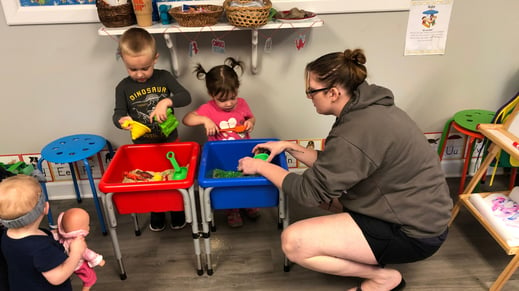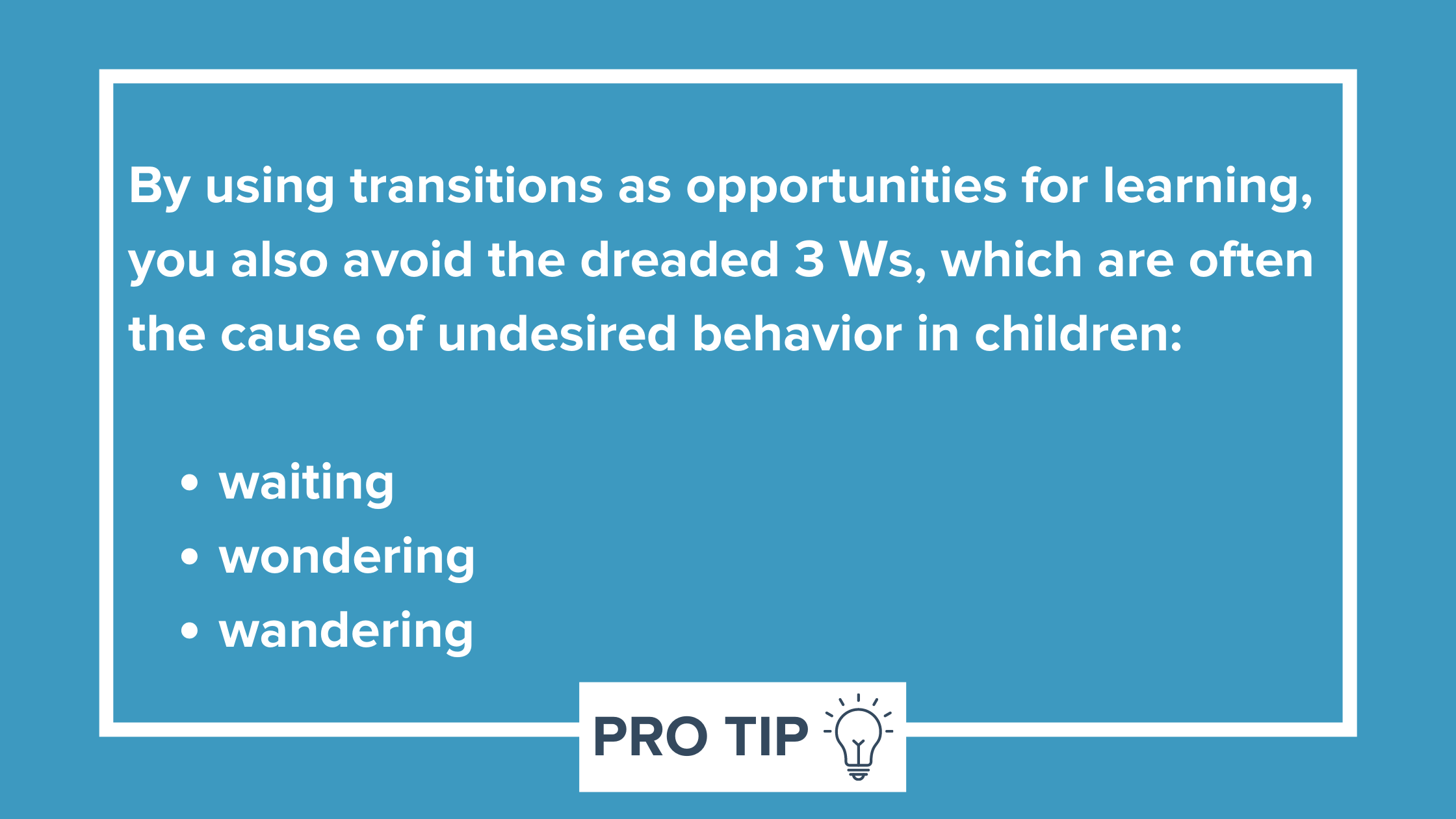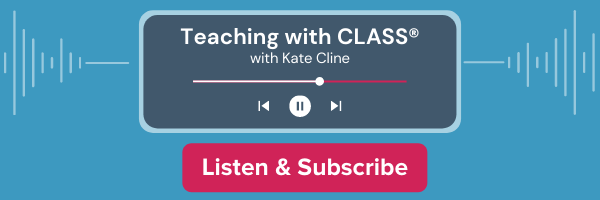
Originally published October 18, 2021
There is always an opportunity for interaction. Some opportunities are easily recognizable: times of play, free choice, centers, small group. We often see teachers engaged in activities alongside children during these times or hear questions being asked. Other opportunities might be a little less obvious. These are the times of your day that you might see as mundane moments that merely require your supervision or monitoring. The times where you’re going through the motions. “I’m doing this thing so I can move on to the next thing.”
In a previous blog, colleague and early childhood environment extraordinaire, Heather Sason, discussed how your classroom environment can help promote effective teacher-child interactions. In this blog, I propose we explore some of the often overlooked times in your day that are ripe for interactions with children and that do promote exploration, learning, and development!
What distinguishes an interaction as a high-quality, effective interaction that promotes learning and development? Intentionality! When I hear “intention,” I think “purpose.” To teach with intention means to teach with purpose. Think about the language used in the CLASS® manual for the dimensions: Facilitation of Learning and Development (FLD) and Facilitated Exploration (FE). Expansion. Engagement. Encouragement. These terms provide a picture of an experience that is dynamic, energetic, pleasant, and full of growth! And, full of purpose.
“That’s great, Megin...but what does this even look like? What do I DO?” Ok, let’s get down to good stuff; three often underrated opportunities for FLD and FE:
Diaper Changes and Potty Breaks
Many of the teachers in my CDA with CLASS courses often describe “everyday” acts that are actually amazing strategies to promote learning and development. Here are a few examples:
-
-
- Involving the Child
You might allow a child or infant to hold their socks and say something like, “Would you like to hold these socks while I change your diaper? This sock has stripes like this one. They’re the same! They are a match!” Not only is this an example of a child’s active engagement during a routine, it is also a great example of expanding a child’s cognition by describing the concept of “matching.” - Mimicking
Many teachers describe copying the facial expressions an infant or toddler makes while lying on the changing table. A toddler smiles, you smile. When an infant sticks out their tongue, you might also stick out your tongue slightly. If you have not tried this, I highly recommend you do. - Following Children’s Lead or Interest
You might be thinking, “how can I tell what a child is interested in during a diaper change or bathroom break?” One way is eye gaze. During a diaper change, you might notice a child gazing at a picture on the wall and say, “ I see you’re looking at the picture of the butterfly! Would you like to read a book about butterflies when we’re done changing your diaper?”
- Involving the Child
-
A lot can happen in a 5 minute diaper change or potty break!
Transitions
Transitions can feel tense or chaotic at times. Or, because we try to keep transitions brief, it can feel like there isn’t enough time to squeeze in any learning. Use transition times to your benefit as fun, lighthearted learning opportunities:
- Singing
Singing during clean-up keeps toddlers involved and actively engaged in their task. Singing is also a powerful tool for language and brain development. - Asking Questions
Asking questions keeps children engaged during a transition and promotes thinking skills. While children are lining up to go outside, you might ask them, “Remember when it rained this morning? After it rained, we had puddles all over the bike track. What do you think might happen if you ride through the puddles?” When you ask these kinds of questions, you are intentionally supporting thinking and prediction skills.
The beautiful thing about expanding children’s cognition is that the focus is on the expanding, not necessarily an activity itself.

Mealtimes and Feeding
How many times have you cut food for a toddler? Or watched a one year old use their fingers to try and pick up the food on their tray? Filled a bottle for an infant? My guess is… a lot! During these times, there is often some conversation. But, there is also an opportunity to move from being “involved” to being “intentional.” Here are a few more of my favorite strategies from teachers in the CDA with CLASS program:
- Talking About Colors, Flavors, or Textures
Comparing and contrasting what children are eating encourages them to analyze similarities or differences: “These apple slices we have for lunch are red, and they are crunchy. Was the applesauce we had at breakfast crunchy? Right, it was smooth and kind of squishy. But they are both made from apples! How do you think the applesauce got that way? Have you ever seen an apple that was a different color?”
There is quite a bit happening in this seemingly simple exchange. Not only is the teacher encouraging children’s thinking skills by asking questions and pointing out differences in the foods the children are eating, but also making connections to children’s real lives by asking about their similar experiences outside the classroom. - Speaking of Asking Questions...
By asking purposeful questions, not just rote, teachers can expand children’s cognition, extend their experience, and embed information about concepts. For example, with older toddlers, cutting food into halves or quarters provides an opportunity to talk about, or embed, information on measurement and numeracy: “Evan, you cut your sandwich in half. How many pieces do you have now? That’s right, two pieces! You started with one big sandwich, but now you have two. What happens if you cut them again? How many will you have? Let’s find out!” - Verbal Encouragement
Encouraging a child trying to pick a small piece of their food, for example, “those bananas are slippery, aren’t they? You almost got it, Michaela! Keep trying!” Verbal encouragement motivates a child to expand or persist in their experience, and therefore your interaction with them!
By intentionally ceasing these moments of an infant’s or toddler’s day, teachers can facilitate exploration, learning, and development. Sometimes, these learning moments may not look all that “academic.” Infants and toddlers may not be able to respond in full sentences, but that’s ok! That doesn’t mean there is no cognition happening. Remember, infants’ and toddlers’ receptive language far exceeds their expressive language.
Play = learning. The longer a child plays or engages, the more learning that is taking place. The longer you engage with them, the longer they will stay engaged.

